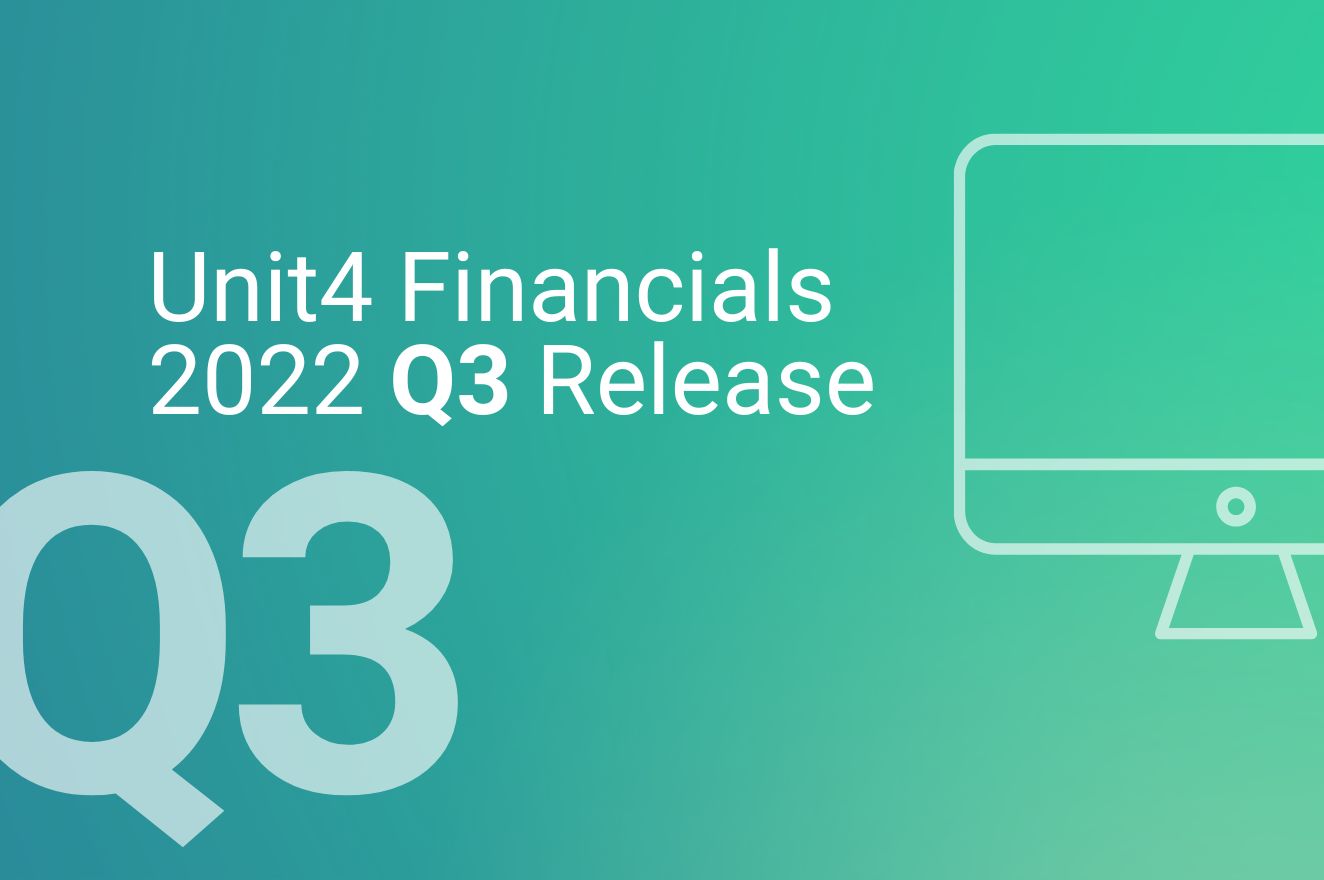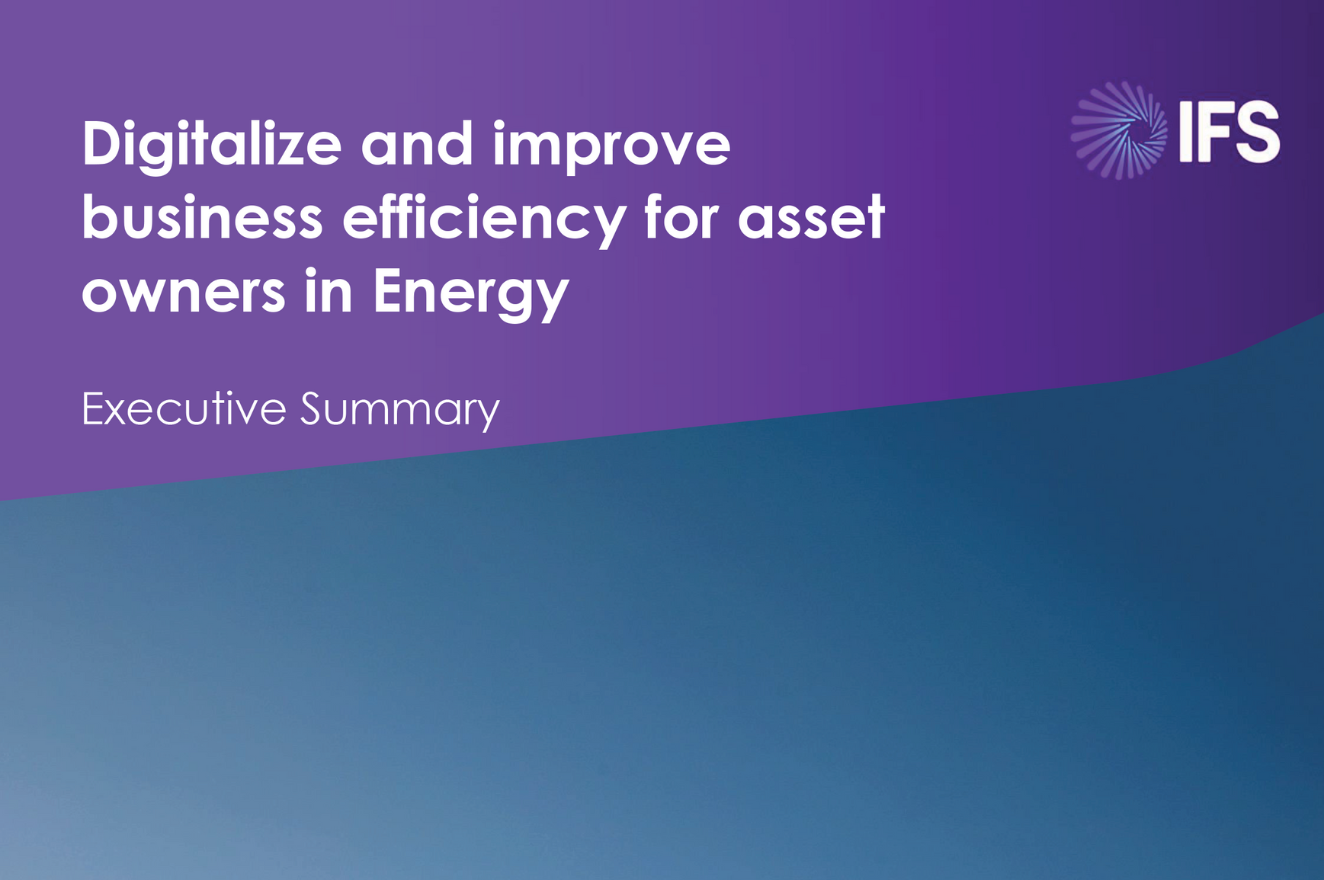Building recession-proof resilience: Is technology the corporate accountant’s ‘secret weapon’?
October 2022
This is no time for finance professionals to retreat to the safe space of transactional work and basic number crunching. Businesses need resilience, and as Millennium Consulting COO, Jeremy Lucas explains, the right technology should put the finance team in the driving seat to deliver it.
We’ve been here before…
From high inflation and borrowing costs, squeezed customer budgets, lingering supply chain woes, through to growing geo-political instability; it’s difficult to imagine how the prevailing dynamics could be any more complex.
At times like these, a little perspective is always welcome. Across the three decades, Millennium Consulting has been in business, this isn’t the first major storm we’ve enabled our clients to weather, and it probably won’t be the last. If experience has taught us anything it is that when businesses are hit by a major challenge, the ones that thrive tend to have certain things in common. They are pragmatic, can change direction quickly, take remedial action, and capitalise on new opportunities.
What we are really talking about is resilience: the ability to protect the business in the face of rapidly changing events. Granted, few of us could predict with confidence what special blend of challenges businesses will be facing this time next year (or even next quarter). But what makes certain companies stand out is the fact that they are resilient by design: they have both the technological capabilities and the mindset to respond to events, whatever shape those events may take.
And while the prevailing mood outside may be one of concern, we’re encouraged by two recent trends. Firstly, the desire on the part of finance leaders to turn their divisions into fully-fledged business partners has never been greater. If businesses are going to make the right decisions at the right time, finance knows that it can and should be in the driving seat, sharing accurate data promptly, collaborating with stakeholders and generating solutions.
Secondly, we look back on how technology has advanced and matured since the last major downturn. The sheer breadth of capabilities offered by best-in-class finance management solutions is more impressive than ever. What’s more, through the continued evolution of enterprise resource management (ERM) software, advanced capabilities such as AI-driven forecasting and integration of operational and financial analysis are within reach of virtually all businesses.
Both the willingness and the technological capabilities to build resilience are present. So how do you transform your own organisation into a resilient one? Here are a few points to bear in mind…
When retrenchment is called for, it becomes tempting to put the whole idea of process transformation and new technological investments on hold. In fact, more corporate businesses are investing in boosting their capabilities right now than two years ago. They realise this is precisely the time to future-ready the finance function, not to make transformation initiatives a casualty of cuts.
It becomes very difficult to deliver the type of analytical and advisory input the wider business needs if your team is mired in routine transactional processes, manual processing, and error rectification.
Assess just how much time is taken up with processes such as invoicing, close and consolidation, intercompany transactions, matching, reporting and eliminations. These processes are often the prime candidates automation. To visualise how those processes could be optimised effectively within your organisation, it could be the ideal time to take a closer look at the automation of manual processes in Unit4 Financials.
When a potentially significant event occurs, its effects are rarely confined to a single area of the business. For finance to understand what’s happening, you need a holistic view of the entire organisation, including the ability to view and analyse data from across the business all in one place, aligning operational planning with your overall business strategy.
LinkedIn’s recent Skills Advantage report shows how employees “want more from their employers than just a paycheck”. Among ambitious finance team members, there’s often a desire to be stretched. Rather than just running up a report or annual plan, they want to collaborate in making decisions and in driving the bottom line.
The next generation of planning and analysis tools enable all operational and financial planning processes to co-exist within a single platform. Data can be mined allowing a real time understanding of what really makes the business tick, allowing more accurate and up to date forecasting, and the generation of analysis the information that speaks directly to the challenges faced by the business.
At present, finance teams are competing for talent. Making these advanced analytics capabilities available is not only good for the business, but also in setting out your credentials as a place where career advancement possibilities are very real.
Perhaps you attempted a shift to automated financial management in the past, but the results were less beneficial than anticipated? On the planning side, has a solution been half-implemented before being quietly shelved?
Not all aspects of digital transformation will be successful in their first iteration. However, the chances are that the drivers that first led you to attempt the project have become stronger than ever over the last few months. Perversely when recession looms, businesses should not be afraid to fail fast and learn and to get your shelved initiatives back on track, expert project recovery input is here if you need it.
What next?
With almost 30 years of helping businesses solve their most pressing challenges, Millennium Consulting is ideally placed to help you weather the current storm. For a full assessment of your needs and expert input on how to hardwire greater resilience into your current accounting, planning and decision-making processes, speak to us today.
How to use the intercompany functionality in Unit4 Financials
September 2022
For organisations comprising multiple corporate entities, Unit4 Financials intercompany functionality can mean more accurate transaction reporting, a lower compliance risk and a possible saving of hundreds of hours of valuable accounting time.
Here’s a closer look at how to put this functionality to work…
Understanding intercompany functionality
When the Unit4 Financials intercompany function is enabled, when you upload a transaction to the books of one company, the sending company document lines are automatically transferred and posted in another company (i.e. the ‘receiving company’).
The transfer takes place using intercompany processing (known in Unit4 Financials as ‘trace’). When the trace has been run, control postings are made in both the sending and receiving companies so that the transactions balance in each company.
You can also send document lines along a chain of companies (a process called forwarding).
Video demonstration
The following video takes a closer look at intercompany functionality in action. This includes:
• How to enter an intercompany transaction directly into Financials
• How to process a journal and run the intercompany processing
• Information on what master documents and templates are required to make the process work (your system administrator should have access to the masters and will be able to set this up for you)
In the video, we use Unit4 Financials for data entry, but you could set up a code Excel template, and this would do the same job for you.
How to unlock the full value of Unit4 Financials
From best practice advice, system optimisation and configuration through to migration from legacy systems, Millennium Consulting enables organisations to realise maximum return on their Unit4 Financials investment. For expert input from an Elite Unit4 partner, speak to us today.
Unit4 Financials 2022 Q3 Release
September 2022
Unit4 Financials 2022 Q3 was made available on 13 September 2022.
The new release contains all the previous Unit4 Financials functionality and new features. Plus, many additional customer requested fixes, highlighting the importance of logging enhancements via Unit4’s Community 4U.
Highlights of the 2022 Q3 release include:
Finance
- Unique index columns updated to not-nullable
- New task: table link element housekeeping
- New task: table link document housekeeping
- Clients can request access tokens from OpenID Connect providers
- Microsoft SQL Server specifiable ODBC Connection String
Addons
- Clients running on FIPS-enabled Windows systems
Deprecated features
- .NET router – The .NET router has been deprecated. The final release has not been determined.
- COM router – The COM router has been deprecated. This release, 2022 Q3, is the last to include the COM router.
General Fixes/Updates
- Workflow attachments can now be removed and added without error during the workflow process.
- The Configuration guide has been updated to remove redundant session management timeout settings.
- New metadata presenter field URL Prefix is now optional making the import compatible with exports from an earlier release.
- Merging two assets together does not now create a superfluous extra manual transaction.
- Billing Table Link no longer creates a document header without detail lines.
- Weekly interval scheduled tasks now continue to run after a year has elapsed since they were created.
- Periods (full stops) are no longer removed from external reference fields when uploading a statement via the statement load master.
- Pay can now display external reference URL and user reference URL.
- Export from Browse Details was not displaying external reference URL correctly.
- When a reversing document is posted and subsequently a partial match is performed on one of its lines, Financials no longer creates spurious document lines with no document headers.
- A primary key issue on the oas_himint table has been resolved so that, for example, it is now possible to update two or more financial years via hierarchies correctly.
- Certain vocabulary items on a Selector Master were incorrectly defaulting to always being mandatory.
- For input templates, prevent the repositioning of the remove line checkbox from corrupting existing input template customisations.
- Export to Excel from Browse Details no longer fails due to invalid characters.
- Reconciliation no longer displays a serious error when selecting the ‘From hard copy’ source.
- The punchout supplier configuration has been enhanced to allow user literals.
- Customising the Tax number field off the supplier search results form, now results in the field correctly disappearing.
- XL Journal Loader has been corrected to allow posting to multiple companies.
The Release Notes detailing the fixes and features within this release can be found in the Documentation area on Unit4’s Community 4U.
Read here to find out when Financials updates are scheduled for 2022, along with important information for legacy V13 and V14 users.
Does your 2023 proposed budget include your Unit4 Financials infrastructure?
August 2022
Does your 2023 proposed budget include your Unit4 Financials infrastructure?
As the budgeting season for 2023 gets underway now is the ideal time to turn your attention to your finance ecosystem to determine what changes would like to make for the rest of the year and into 2023.
Areas for improvement:
Process automation
Upgrading
Training
Cloud
Migration
FP&A
Streamline operations
Whether your journey in 2023 is to continue with Unit4 Financials or to upgrade to ERP or ERPx, we are here to support you.
Why choose Millennium for Unit4 Financials?
We are an Elite Unit4 Partner with more than 27 years of experience working with Unit4 Financials. That means we have the knowledge and experience to design, implement and support the right Unit4 Financials solution for your business.
Digitalise and improve business efficiency for asset owners in Energy
August 2022
IFS is the market leader providing business software to the energy industry, working with more than 400 projects and/or asset-driven companies.
Many of the companies in the energy industry are diversifying away from major reliance on oil & gas revenue and embracing the journey to net zero—and, more specifically, renewable opportunities. This requires them to adopt an agile mindset and ensure that their enterprise software solutions are flexible enough to support new business models and ways of working.
This white paper explores ways for asset owners to digitalize to improve business efficiency, reducing cost and secure asset uptime with built-for-purpose supply chain management.
The Future of Energy and Utilities
August 2022
Build a better future for Energy and Utilities
There’s a bold new future ahead for the energy and utilities sector
The global movement towards sustainable energy and carbon-free solutions is driving significant change. As is the move to build and service smart, connected cities and communities.
Ensure that your business is able to keep up with these industry changes and focus on services and outcomes instead of products that will allow you to orchestrate your customers, people, and assets as your business transforms.
This white paper will outline some of these key challenges in the Energy and Utilities sector, and highlight practical ways to deliver the Moment of Service that will delight your customer—time after time.
IFS Partnership announcement
August 2022
Millennium Consulting is delighted to announce it has signed a Partnership Agreement with global cloud enterprise software company IFS
IFS develops and delivers cloud enterprise software for companies around the world who manufacture and distribute goods, build and maintain assets, and manage service-focused operations.
“Our new IFS partnership builds upon the software and services arrangements that have been developed by Millennium with other complementary software vendors over the past 15 years.”
— Philip Keet, CEO, Millennium Consulting
IFS is a fast-growing leading software vendor that focuses on key market sectors. Growth in H1 2022 came from winning net new customers as well as from the IFS install base who continue to upgrade to IFS Cloud, resulting in cloud revenue growth of 56 % in H1 2022 compared with H1 2021. The company attributes its continued growth and success to its deep industry expertise, innovative and flexible IFS Cloud solution, and seamless integration across all its capabilities.
“We are very pleased to welcome Millennium Consulting as a partner. Millennium Consulting is a solid, experienced organisation with a strong client base and has delivered successful projects for many years. This partnership will help both companies with their significant growth plans and we look forward to a long and successful partnership.”
— Alan Laing, Managing Director, IFS UK&I
About IFS
IFS develops and delivers cloud enterprise software for companies around the world who manufacture and distribute goods, build and maintain assets, and manage service-focused operations. Within our single platform, our industry specific products are innately connected to a single data model and use embedded digital innovation so that our customers can be their best when it really matters to their customers—at the Moment of Service™. The industry expertise of our people and of our growing ecosystem, together with a commitment to deliver value at every single step, has made IFS a recognized leader and the most recommended supplier in our sector. Our team of 4,500 employees every day live our values of agility, trustworthiness and collaboration in how we support our 10,000+ customers. Learn more about how our enterprise software solutions can help your business today at ifs.com.
About Millennium Consulting
Millennium Consulting is a UK headquartered management consultancy which for the past 28 years has provided Enterprise Resource Planning (ERP) and Finance Transformation services to clients globally.
Mandatory B2B E-Invoicing in France: What it means for your business
Mandatory B2B E-Invoicing in France: What it means for your business
August 2022
The French Tax Authority (DGFIP) has announced its intention to make e-invoicing and e-reporting compulsory from 1 July 2024*.
Read on to understand what this means and who will be affected by the changes. We also consider the wider global trend of mandatory e-invoicing and the steps businesses should take to prepare for what is ahead.
*Important update: The French government announced on 28th July 2023 that it was decided to postpone the implementation of the system, scheduled for 1st July 2024, to allow sufficient time for this reform to be a success. The date of the postponement will be defined as part of the work to adopt the Finance Act for 2024. Therefore, all dates mentioned on this page are subject to further change.
This page will continuously be updated (originally published August 2022, last updated November 2023)
The what and why of e-invoicing
E-invoicing is different from merely generating an invoice in a digital format. Rather, it refers to specific frameworks for the issuing, delivery, and receipt of invoices in a standardised way.
The data contained in e-invoices follows a structured form, enabling it to be automatically logged on companies’ accounts systems. In most – but not all – jurisdictions where it is mandated, e-invoicing is accompanied by an ‘e-reporting’ requirement, i.e. submission of data to the relevant country’s tax office.
Why is e-invoicing on the rise?
In short it is because governments are losing tax revenue receipts. Across the EU in 2021, the annual tax gap – i.e., the amount of tax revenue lost to fraud or inaccurate reporting – was estimated to be in excess of EUR 130 bn. Tax authorities see it as a way to reduce inaccuracies (not least, e-invoicing theoretically eliminates the possibility of revenue somehow becoming lost on its way to an AP system). E-invoicing is also favoured by treasury ministries because it can help reduce the gap between tax liabilities and tax being actually paid.
When governments go down the mandatory e-invoicing path, they usually apply it to government procurement first, before rolling it out to B2B transactions. The UK is currently at the stage of mandatory e-invoicing for public bodies following the introduction of The Public Procurement (Electronic Invoices, etc) Regulations 2019. This means that virtually all public sector organisations are required to use e-invoicing.
What is changing in France?

France has had mandatory e-invoicing for business-to-government (B2G) transactions in place since 2020. This means that any B2G sales invoice must be an invoice and must be compatible with the country’s designated platform for this, Chorus Pro.
France has now announced that from July 2024, all companies subject to VAT will be required to accept e-invoices. Furthermore, the use of e-invoices along with e-reporting will start becoming mandatory for B2B transactions from July 2024 through to January 2026 (depending on company size).
To whom does this apply?
The rules apply to French VAT registered and established companies. Such companies will need to have the capacity to receive e-invoices. If they issue invoices to business customers, they will also need to move to e-invoicing in respect of those contracts within the relevant timeframe.
Also, the new e-invoicing requirements are accompanied by additional e-reporting rules. Be aware that despite there being no requirement for French companies to issue e-invoices for B2C transactions or in respect of customers based outside of France, certain data in respect of such transactions will need to be submitted to the French tax authority.
Companies with a multinational presence will need to check carefully whether, and to what extent they are caught by the new rules.
Timeframes at a glance
- All companies subject to VAT in France must be able to receive e-invoices starting 1 July 2024.
- Mandatory issuance of e-invoices and e-reporting for enterprises: 1 July 2024.
• Small and medium-sized enterprises (a workforce of less than 5000, and annual sales of less than 1.5 bn or a balance sheet total of less than 2bn)
• SMEs and small enterprises (fewer than 250 employees and annual sales of less than 50m or a balance sheet total of less than 43m)
E-reporting data requirements
E-invoices can be issued through the Portail Public de Facturation (PPF) via the Chorus Pro platform, which is the system currently used for B2G e-invoicing. Alternatively, businesses can opt to send invoices via an approved third-party commercial platform (known as a PDP). Under each system, businesses issue the e-invoice to the platform and the platform does the rest: i.e. delivery of the e-invoice to the buyer and reporting to the French tax authority (DGFIP).
The invoice can be created in one of three base formats compatible with the EU’s e-invoicing standard: UBL, CII, Factur-X.
The following information needs to be captured and transmitted to DGFIP:
Companies with a multinational presence will need to check carefully whether, and to what extent they are caught by the new rules.
• Date of payment collection
• Amount collected, including VAT
• Unique identification number (SIREN) for both supplier and customer
• Intra-community VAT number for supplier and customer
• Intra-community VAT number of supplier’s tax representative
• Supplier’s and customer’s country
• Category of supply
• Invoice issue date
• Unique invoice number
• Number of the rectified invoice if a corrective invoice is issued
• Option for tax payment based on debits
• Total payable exclusive of VAT
• Amount of corresponding VAT by rate
• Applicable VAT rate
• Details of any exemption
• Invoice currency code/designation
• Mention of self-billing (where applicable)
• Reference to any special scheme
• Mention of reverse charge (where applicable)
• Date of delivery or performance
• Date and amount of any deposit paid
Preparing for the changes
Organisations with a corporate presence in France should act now to determine the extent to which the new regime will impact their invoicing and accounting processes. Even if you do not have a French presence but you regularly provide goods or services to companies over there, it is good practice to find out the requirements of your business partners. In other words, if regular customers intend to start using e-invoices, do you have the technical capabilities to accommodate this?
France is currently ahead of the UK in rolling out the mandatory use of e-invoices and e-reporting beyond B2G transactions. However, given the direction of travel in this country (particularly with the government’s Making Tax Digital initiative), it is likely to be only a matter of time until similar requirements are put in place here.
This is the ideal time to consider your readiness for e-invoicing, particularly with regards to AP and AR automation. Also, despite mandatory e-invoicing being a government-driven policy, it can also bring material benefits to businesses. Not least, the fact that data is sent directly to a buyer’s AP system means that invoices can be logged, processed and approved in a fraction of the time it would take with traditional invoicing processes.
More generally, if you can demonstrate to business partners that you are equipped with e-invoicing capabilities at an early stage, it helps demonstrate your commitment to hassle-free billing and invoice management: a potentially valuable selling point in the current climate.
Looking to futureproof your accounting processes to accommodate new ways of invoicing?
Millennium is highly experienced in working with European companies, helping them manage the diverse accounting regulations.
Focussing on digital invoicing, our software has been used to successfully process hundreds of thousands of outgoing and incoming XML invoices for Unit4 Financials (previously known as Coda) since January 2019, when it became obligatory in Italy.
Everything you wanted to know about Unit4 Financials Chart of Accounts
July 2022
But didn't know who to ask...
By providing a central record of all your company’s accounts, the chart of accounts (CoA) is the foundation for your business’ recordkeeping. Get it right, and the CoA will help to steer your key accounting processes, make it easier to follow financial reporting standards and provide a useful picture of the overall financial health of the business.
So how do you optimise your CoA so it becomes a financial reporting asset? This is where Unit4 Financials proves to be particularly useful. Thanks to its flexible elements structure, the solution offers huge scope to customise your CoA, so it is fully aligned to your requirements, enabling you to stay on top of both statutory reporting and internal management accounting.
To help you get the most out of Financials, read on to get the answers to some of the most frequently asked questions linked to chart of accounts…
Is there a way to download a chart of accounts with numbers and descriptions?
Yes.
Because Unit4 Financials uses metadata, it’s easy to locate the information you need by entering descriptions or codes into a generic browse master. Select the data view that you want to use and then use a presenter and selector to bring up a list of all relevant elements.
Depending on the view you use, you can use the browse master to retrieve more than just codes and descriptions. For example, you could use it to get information such as addresses and bank details.
Flexi-fields provide an easy way to define, capture and retrieve key information within Unit4 Financials. If you utilise the flexi-fields function, you can use it to create a view that will pull in key ancillary information against the elements. For instance, let’s say you have a project that is set up as an element. Using flexi-fields, you should be able to design and create a view that would not only just pull in that element, but also all the flexi-field information assigned to that element (e.g. attributes such as project manager, project type, start and finish dates etc).
Tip: for more information on this, take a look at our flexi-fields guide here.
Can you have different Charts of Accounts for different companies inside Unit4 Financials?
Yes, you can have different chart of accounts (element strings) for different companies within U4F.
And of course, it’s worth remembering that you could have two GL code structures relating to the same company; one being a local structure and the other being a corporate one using element substitution.
Each company has its own reporting and accounting requirements. For most, a single CoA is all that’s needed. If, however, you require more than one CoA, this is possible to set up within Unit4 Financials. Remember, that you can also have a different element string in each company but common GL code structure to enable consolidation reporting.
I’ve used a finance system that allowed the use of what were called ‘posting and reporting attributes’ and allowed the creation of relations between different attributes. Is there something similar in Unit4 Financials, and would this include element groups?
Element groups within Unit4 Financials can give you this capability. What’s more, a similar end result can also be achieved through flexi-fields, as this function enables you to create a relationship between different elements.
A word about Chart of Accounts design
There are two aspects to this.
The first is to ensure you get the element structure correct, otherwise the CoA will fail to include the information required by your organisation.
The second is the use of wildcards (*). The GL code structure should be configured to facilitate this. For example, if you need to retrieve fixed assets account information, it is a lot easier to enter a * in the box than to stipulate that you need to see all assets in the range of, say, 1,000 to 1,999.
Chart of Accounts demonstration
Our Spotlight video demonstrates optimal CoA design and configuration, showing you how to extract precisely the information you need directly from Unit4 Financials. Watch it here…
Is your Chart of Accounts still fit-for-purpose? Optimise the easy way with Millennium Consulting
Especially after corporate reorganisation or a shift in business focus, a fresh pair of eyes can be invaluable.
Millennium Consulting can help you design a new CoA and element structure to ensure alignment with current business needs. This includes expert workshops to understand your reporting and accounting requirements, along with creation of an element structure and CoA that’s customised for your organisation.
To discuss your options, please do get in touch.
Looking at the Diary Function in Unit4 Financials
June 2022
Discover how the diary functionality within Unit4 Financials helps ensure that key tasks are actioned or followed up at the right time…
What is the diary function?
The diary function can be used with Documents and Elements in Unit4 Financials. You can use it to record actions you have taken, as well as for setting reminders for new events and follow-up actions.
Credit control is an obvious area where the diary function proves particularly useful. For instance, you can create a diary event as a reminder to check the payment status of a specific invoice or to telephone a particular customer. You can also create diary events to record the fact that an action has been taken (e.g., the date on which a chasing letter was sent to a customer).
More generally, you can use the function to set reminders for events such as appointments and submission deadlines.
Accessing the diary function
Diary events can be applied to a whole debtor account, an element, or to an individual transaction (a Document).
The diary is available in the following areas:
• Browse details & matching. This allows notes to be applied to individual transactions.
• Age debt reports & account summary. This allows notes to be applied to whole accounts and individual transactions.
Every diary event is assigned to a relevant financial user. The assigned user is then responsible for ensuring the event is actioned.
To edit events for an element or document, you need write access to the element master.
For a document line, you must have ‘write’ access to the line. When you attempt to save a diary event or make changes to that event, validation checks are made. If the event is not valid, the reason for the error is displayed.
Viewing diary events
You can view diary events associated with any company or element you have access to.
Your personal diary can be viewed by going to Finance > Enquiries > Diary. This provides a simple view of your diary events, allowing you to quickly identify which events are due, along with the priority status for each event (high, medium, or low).
Watch the diary function in action
In this Spotlight video, we illustrate how the diary function works in practice. We also take a closer look at how to use your personal diary, along with the masters behind the diary.
For further advice on configuring your diary or any other aspect of Unit4 Financials, our consultants are always happy to help. To put our expertise to work, contact Millennium Consulting today.











